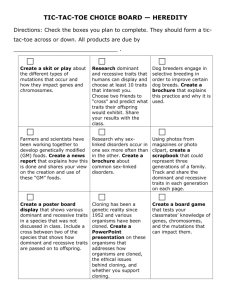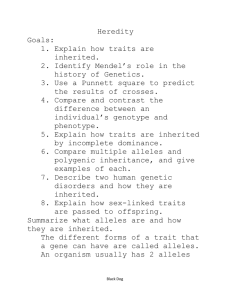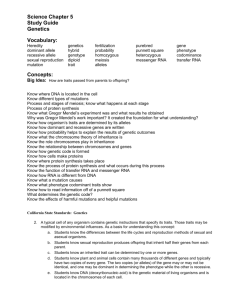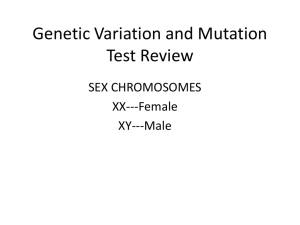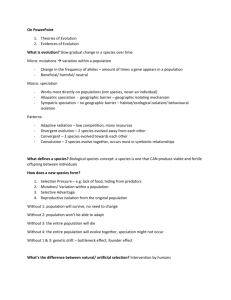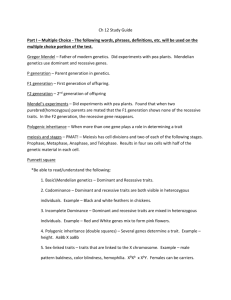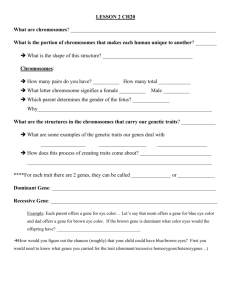Science Review Test 3 answer key
advertisement
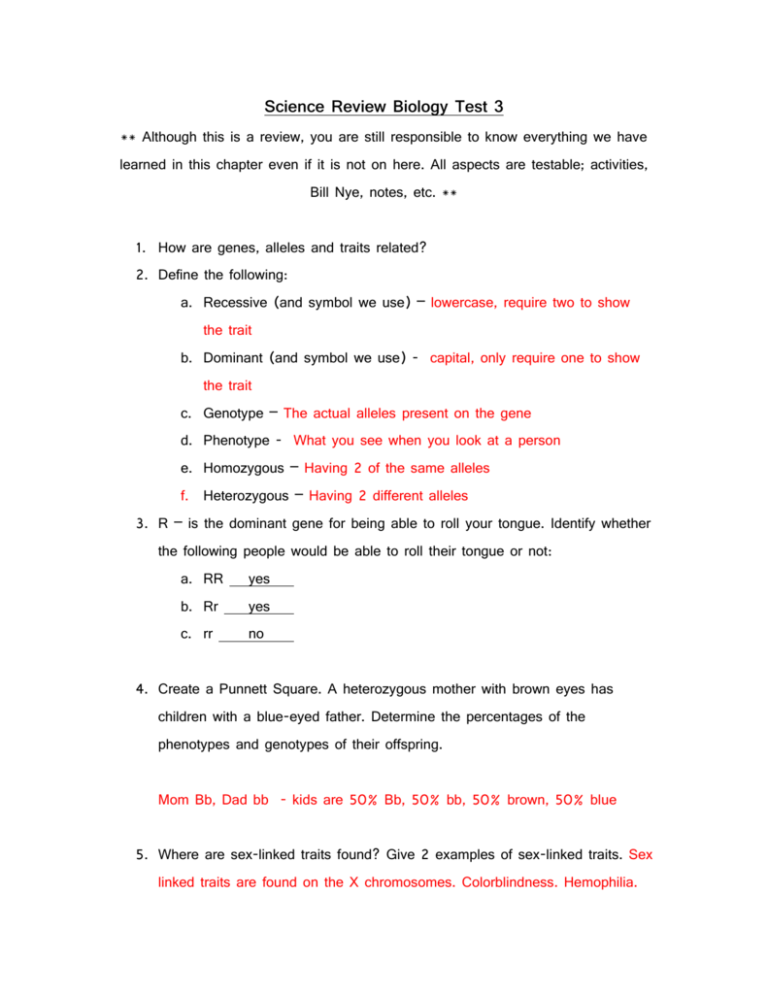
Science Review Biology Test 3 ** Although this is a review, you are still responsible to know everything we have learned in this chapter even if it is not on here. All aspects are testable; activities, Bill Nye, notes, etc. ** 1. How are genes, alleles and traits related? 2. Define the following: a. Recessive (and symbol we use) – lowercase, require two to show the trait b. Dominant (and symbol we use) - capital, only require one to show the trait c. Genotype – The actual alleles present on the gene d. Phenotype - What you see when you look at a person e. Homozygous – Having 2 of the same alleles f. Heterozygous – Having 2 different alleles 3. R – is the dominant gene for being able to roll your tongue. Identify whether the following people would be able to roll their tongue or not: a. RR yes b. Rr yes c. rr no 4. Create a Punnett Square. A heterozygous mother with brown eyes has children with a blue-eyed father. Determine the percentages of the phenotypes and genotypes of their offspring. Mom Bb, Dad bb - kids are 50% Bb, 50% bb, 50% brown, 50% blue 5. Where are sex-linked traits found? Give 2 examples of sex-linked traits. Sex linked traits are found on the X chromosomes. Colorblindness. Hemophilia. 6. Identify the sex chromosomes for males and females. Explain what makes a male a male. – Male XY, Female XX – A male is a male because Y is similar to a dominant gene and X overpower it. Therefore all the male traits come through. 7. Define sex-limited traits. These traits are only found on the Y chromosome. 8. N – is the dominant gene for having normal vision. n – is the recessive gene for being colour blind. Create a Punnett Square of a mother who is colour-blind and a father who has normal vision. Which children will be colour blind, if any. Mom is XX, with both X’s having n. Dad is XY, with the X having a N. The girls will both have normal vision but be carriers. The males will both be colourblind. BEING ABLE TO EXPLAIN WHY HAVING A COLOURBLIND MOM IS NOT GOOD FOR HER SONS IS A GOOD TEST QUESTION. 9. What is a mutation? Abnormality in the chromosome. 10. Name 4 different ways errors occur in chromosomes. Deletion, insertion, inversion, duplication. 11. How does our body deal with mutations in regards to traits? Excellent test question. Our body made mutations recessive so that you need to inherit two to show the mutation as a trait. This allows for less opportunity for mutations. Whereas, if the mutation was dominant you would only need to inherit one allele. 12. Give an example of a chromosome abnormality. Cystic Fibrosis. 13. Give 2 examples of environmental factors that can cause mutations. Toxins, pollution, radiation, food additives. 14. Describe cloning and stem cells. Give an advantage and disadvantage of each. Cloning – creating an identical copy. Pro – organs for transplants. Con – immoral to harvest people for organs. ** read your pro/con sheet Stem cells – cells that can become anything. Pro – can tell them to become anything so they can replace cells that normally wouldn’t be replaced. Con – come from embryos. Debate whether these are babies or not. 15. What was the purpose of the human Genome Project? To code what genes are located on what chromosomes so that they could identify disease locations and hopefully create cures. 16. What were 2 concerns from Bill Nye about cloning patents? Designer babies and woman selling eggs. 17. What is Golden Rice? Do you think it is beneficial? Genetically modified rice that has had extra Vitamin A added. Is it really beneficial if it only has 10% of the daily value?
